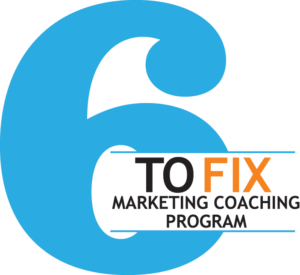Estimated Read Time: 3 Minutes
In 1997, I was able to sell my business, which I started six years earlier even though I did so with very little real-world knowledge or experience.
I started that business at 26-years-old and what I learned through that venture has stayed with me throughout my career as a consultant, entrepreneur, and corporate executive.
In 1991, I was newly married, had a little experience in sales, but knew a lot about the service I was getting into: audio recordings, and specifically, on-hold recordings for business telephone systems. I knew a lot about making the “product,” but knew very little about running a business that made the product. Profound difference.
Growing the Business
The business was formally launched in the laundry room of a one-bedroom apartment in a 3-foot x 6-foot area. I had an 8-track recording machine, and voice talents would come over and record voiceovers right there in my laundry room. I eventually graduated to a two-bedroom condo with one bedroom reserved for the business, and finally a 3-bedroom house where the basement was finished for the business including a “real” soundproof voiceover booth. Keep in mind in the 90s, it was not legit to have a home-based business, so creative selling and brand positioning became a way of life.
Over the years, the business grew to include many other services including video and print production, multimedia production, and early website projects, among others. Eventually, I shared space with another agency before selling the business six years after it was founded.
But, as the business expanded through multiple service offerings and top line revenues grew, the bottom line profitability was always attributable to the customer base of the core service offering. It was this customer base that created the bulk of the value of the company.
In his book, Built to Sell, John Warrillow states that “…just 1 out of 100 business owners is successful in selling his or her company each year.” A sobering statistic, but in many cases, purchasing a business may simply be buying another person’s problem…or the seller’s “job.” Most small businesses are fraught with myriad challenges including adequate capital, cash flow, management, personnel, scalability, and perhaps, one of the biggest challenges of all: take the owner out of the day-to-day operations, and many businesses literally stop or drop like a lead balloon.
Why I Was Able to Sell My Business
So, why was I able to sell my business six years after I started it? Was it beginner’s luck? Was it that good things happen to inexperienced and naive people?
When I decided to list the business, I knew the company was valuable, but wasn’t sure that the valuation of the business reflected its full value or that it would resonate with potential buyers.
I quickly surmised the three main reasons why the business was salable:
- It had a large and profitable customer base – hundreds of customers that either renewed their service every year or signed multiple-year contracts.
- It had a brand – we often think of Nike, Apple, and Coke when we think of “brands,” but small businesses build valuable brands, too.
- It was process-driven – systems were in place that would allow the new owner to step-in and run the business from day one.
Creating a Valuable Business
From that first entrepreneurial experience, I learned that three relatively simple things grow revenue, build brands, and create business value:
- Brand Strategy – if you are intentional about why your company does what it does; how you want customers to think about your brand; and what differentiates your brand from your competitors, you will build brand value.
- Intense Customer Focus – if you take care of your customers, most will not leave you. The importance of customer retention cannot be overstated. I maintained an approximate 90% + customer retention rate, which paid dividends throughout the life of the business when I owned it but especially when it came time to sell.
- Competitive Advantage – is achieved through the brand and customer base, but also through repeatable and system-driven processes (versus people-driven), which foster efficiencies, profitability, and overall business value.

Sticky Point About Selling My Business
26 years later, the cornerstone of my business and marketing philosophy centers around the importance of the brand, customer base, and competitive advantage – those three things build growth and business value. Over the years, I have been in several businesses as an owner or employee and have consulted with numerous companies – when the focus is on the “Big 3,” great things can happen.
Learn More About Growing a Valuable and Salable Business
Check out the Six To Fix Marketing Coaching Program!


